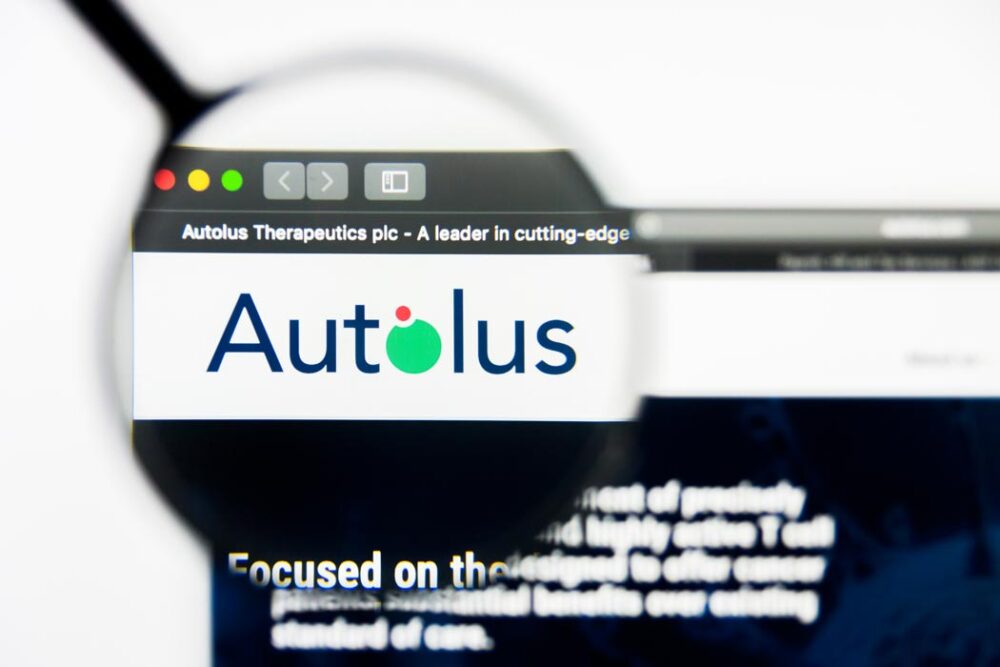Advertisment
Autolus Therapeutics presents key data on Obecabtagene Autoleucel (obe-cel) at 2024 ASH Annual Meeting

Autolus Therapeutics announces the online publication of four abstracts submitted to the American Society of Hematology (ASH) Annual Meeting, to be held from December 7-10, 2024, in San Diego.
“The FELIX study’s rich data set continues to provide important information in shaping our understanding of the use of obe-cel to treat adult r/r B-ALL patients,” said Dr. Christian Itin, Chief Executive Officer of Autolus. “We are presenting additional data at ASH that suggests deep molecular remission that may predict better outcomes; shows the impact of bridging therapy on outcomes; highlights the costs associated with managing CRS and ICANS; and how using hematotoxicity scores can help identify patients who are more likely benefit from treatment with obe-cel.”
Abstract 194508 – Oral presentation:
Title: Obecabtagene autoleucel (obe-cel) for Adult Relapsed/Refractory B-Cell Acute Lymphoblastic Leukemia (R/R B-ALL): Deep Molecular Remission May Predict Better Outcomes
Session Name: 613. Acute Lymphoblastic Leukemias: Therapies Excluding Allogeneic Transplantation: Risk Stratification and CAR-T Therapies
Session date and time: Monday, December 9, 2024; 4:30 PM – 6:00 PM PT
Presentation Time: 5:00 PM
Session room: Marriott Marquis San Diego Marina, Marriott Grand Ballroom 5-6
Publication Number: 963
Presenting Author: Dr. Elias Jabbour, Professor, Department of Leukemia, Division of Cancer Medicine, MD Anderson Cancer Center, Houston, TX
Summary: In this session we report on the correlation between depth of measurable residual disease (MRD)-negative remission and clinical outcomes in patients treated with obe-cel. Data demonstrated that 84% of responders for whom MRD by next-generation sequencing (NGS) could be analyzed achieved MRD <10–6 leukemic cells which was associated with more durable responses, and higher event free survival (EFS) and overall survival (OS) rates than those observed in patients with MRD ≥10–4 and between 10–4 and 10–6 leukemic cells. Patients who did not achieve MRD <10–6 had poorer outcomes.
Abstract 201514 – Poster presentation:
Title: Obecabtagene autoleucel (obe-cel) for Adult Relapsed/Refractory B-Cell Acute Lymphoblastic Leukemia (R/R B-ALL) in the Open-Label, Multi-Center, Global, Single-Arm, Phase Ib/II FELIX study: The Impact of Bridging Therapies on CAR T-Cell Expansion and Persistence
Session Name: 704. Cellular Immunotherapies: Early Phase Clinical Trials and Toxicities: Poster II.
Session date and time: Sunday, December 8, 2024; 6:00 PM – 8:00 PM PT
Session room: San Diego Convention Center, Halls G-H
Publication Number: 3458
Presenting Author: Dr. Jae H Park, Leukemia Specialist & Cellular Therapist, Memorial Sloan Kettering Cancer Center, New York, NY, USA
Summary: Patients in the FELIX study received bridging therapy (BT) (chemotherapy with or without Inotuzumab ozogamicin (INO) or Tyrosine kinase inhibitors (TKI), single-agent INO, single-agent TKI, steroids, or rituximab) per investigator decision; use of blinatumomab as a BT agent was not permitted. Analysis of BT indicated that INO is effective in reducing disease burden prior to obe-cel infusion. No apparent differences in expansion and long-term persistence of obe-cel were observed based on any of the BT evaluated, suggesting that long-term persistence of obe-cel is possible irrespective of BT and independent of initial tumor burden at LD. Reduction in tumor burden at LD through BT with INO led to more favorable survival outcomes compared with BT without INO, while maintaining a tolerable safety profile. A limitation of this study is the small number of patients who received BT with INO. Further studies comparing BT with INO-containing therapies or chemotherapy are warranted.
Abstract 205694 – Poster presentation:
Title: Healthcare Resource Utilization and Costs Associated with Managing CRS and ICANS in Patients with Relapsed/Refractory Adult B-Cell Acute Lymphoblastic Leukemia Receiving Obecabtagene autoleucel (obe-cel)
Session Title: 704. Cellular Immunotherapies: Early Phase Clinical Trials and Toxicities: Poster III
Session date and time: Monday, December 9, 2024; 6:00 PM – 8:00 PM PT
Session room: San Diego Convention Center, Halls G-H
Publication Number: 4837
Presenting Author: Dr. Bijal D Shah, Associate Member in the Department of Malignant Hematology Moffitt Cancer Center, Tampa, FL, USA
Summary: A secondary analysis of the data from the FELIX study was conducted to evaluate Facility-Related Healthcare Resource Utilization (HCRU) as a result of cytokine release syndrome (CRS) and immune effector cell–associated neurotoxicity syndrome (ICANS) and estimate the overall costs for managing these adverse events (AEs) among patients with r/r B-ALL. HCRU for patients with treatment-emergent CRS and/or ICANS was monitored for 6 months post obe-cel administration. Data from the analysis demonstrated that management costs for CRS and ICANS events generally increase with severity, but these events were rare in the FELIX study. Of note, medication usage (in particular tocilizumab) and hospitalization/intensive care unit (ICU) costs were key drivers of overall CRS and/or ICANS management costs.
Abstract 208028 – Poster presentation:
Title: Risk Factors Associated with Sub-Optimal Outcomes Following Obecabtagene autoleucel (obe-cel) for Relapsed/Refractory B-Cell Acute Lymphoblastic Leukemia (R/R B-ALL): What We Have Learned from the FELIX Trial
Session Name: 704. Cellular Immunotherapies: Early Phase Clinical Trials and Toxicities: Poster III
Session date and time: Monday, December 9, 2024; 6:00 PM – 8:00 PM PT
Session room: San Diego Convention Center, Halls G-H
Publication Number: 4845
Presenting Author: Dr. Claire Roddie, MD, PhD, FRCPath, Associate Professor Haematology and Honorary Consultant Haematologist, Cancer Institute, University College London (UCL)
Summary: Immune effector cell-associated hematotoxicity is the most common side effect of CAR T therapy but the pathophysiology of prolonged hematotoxicity is poorly understood and the lack of consensus for its treatment presents challenges. The CAR-HEMATOTOX (HT) model was developed in large B-cell lymphoma for risk-stratifying patients prior to CAR T therapy for hematotoxicity and outcomes. Using the HT model from the analysis from the study, the HT score was found to be correlated with disease burden. Risk-stratification for hematotoxicity, using pre-lymphodepletion clinical parameters, together with disease burden, has the potential to be a useful tool for identifying patients more likely to benefit from obe-cel treatment and experience reduced toxicity. Patients with high-risk HT scores had consistently worse outcomes than patients with low-risk HT scores, leading to the view that further studies are warranted.





